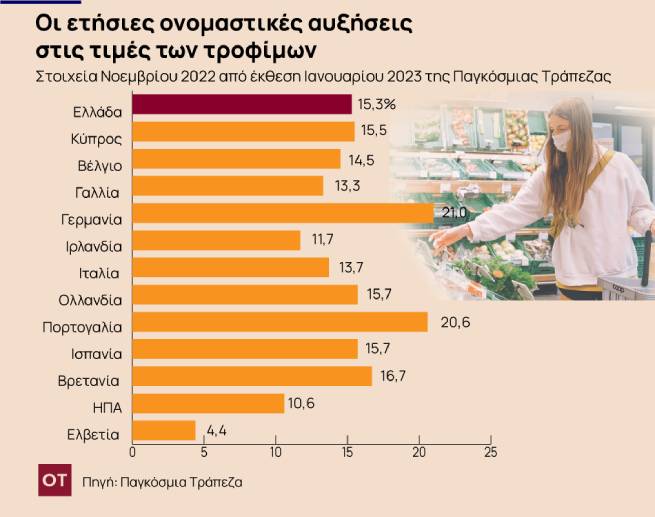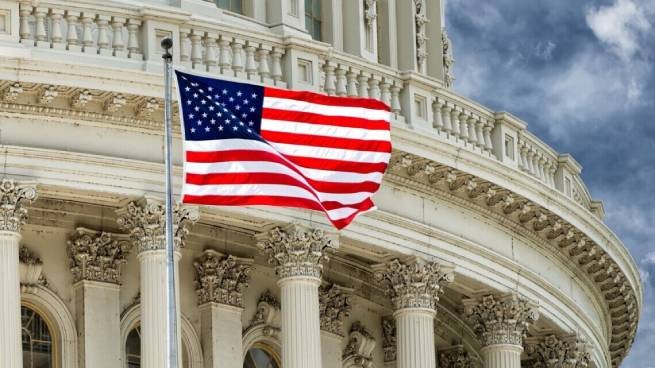Not only has food inflation not come down, but prices are expected to remain high for some time to come, international organizations such as the World Bank, International Monetary Fund and market analysts warn.
The current situation in the world threatens food security, causes social tension, devastating household accounts and state budgets of countries, especially European ones. The wake-up call came from the World Bank, which released its latest food security report (January 2023).
Five main risks are noted that increase food prices: the cost of fertilizers, energy, the risk of termination of the agreement on the export of grain from Ukraine, climate change and speculative trends. It is an “explosive cocktail” that bankrupts households and stuns citizens who are trying to cut spending wherever they can.
Significantly, according to the World Bank report and as of November 2022, food prices in Greece recorded an average increase of 15.3% year-on-year in nominal terms. In Cyprus this growth reached 15.5%, in Belgium 14.5%, in France 13.3%, in Germany 21%, in Ireland 11.7%, in Italy 13.7%, in the Netherlands 15.7%, in Portugal 20.6%, in Spain 15.7%, in Switzerland 4.4%, in the UK 16.7% and in the USA 10.6%. However, in real terms, according to the World Bank, this growth is much higher.
War factor
Food security risks remain high. Food prices were already high before Russia invaded Ukraine early last year, due to drought and production problems then directly linked to the pandemic.
Then food and crop prices skyrocketed because Russia was the world’s largest exporter of fertilizer, and the war and sanctions sent prices skyrocketing. At the same time, rising prices for natural gas, a key component of nitrogen fertilizer production, are also putting pressure on agricultural markets, according to the Financial Times. Expensive energy has also increased the cost of producing and processing other products.

Last year’s agreement between Moscow and Kyiv on the freer movement of Black Sea grain played a decisive role in lowering prices, along with abundant supplies from Russia, while lower gas prices dampened price increases in fertilizer markets.
Big risks
But now analysts are warning that the grain deal could end. In addition, volatile energy prices and climate change, in turn, threaten to undermine food production and crops. In addition, the constant increase in interest rates by central banks to fight inflation has also affected the financing of food companies and manufacturers. In addition, food companies are finding an opportunity to profit by raising prices.
The IMF is also concerned
A December 2022 International Monetary Fund (IMF) report showed that global food prices are expected to remain high due to war, energy costs and weather conditions. It says that record prices exacerbate food insecurity, exacerbate social tensions and strain the budgets of countries dependent on food imports. To better understand the scale of these challenges for policy makers, the authors of the report quantified four major factors that, in particular, led to higher grain prices.
These are the crisis of fertilizer production (shortage), the rise in oil and natural gas prices due to the war, problems with production (growing) and rising interest rates in the United States, according to the IMF’s World Economic Outlook report. The study concerns cereals (wheat, corn, rice and some smaller crops) that are common in terms of population consumption and difficult to replace.






More Stories
Highway E65: how long does the Athens-Kalambaka journey take, toll
"Tax" for fire protection of real estate
The first non-state medical school in Greece